Know About Blockchain and tokens
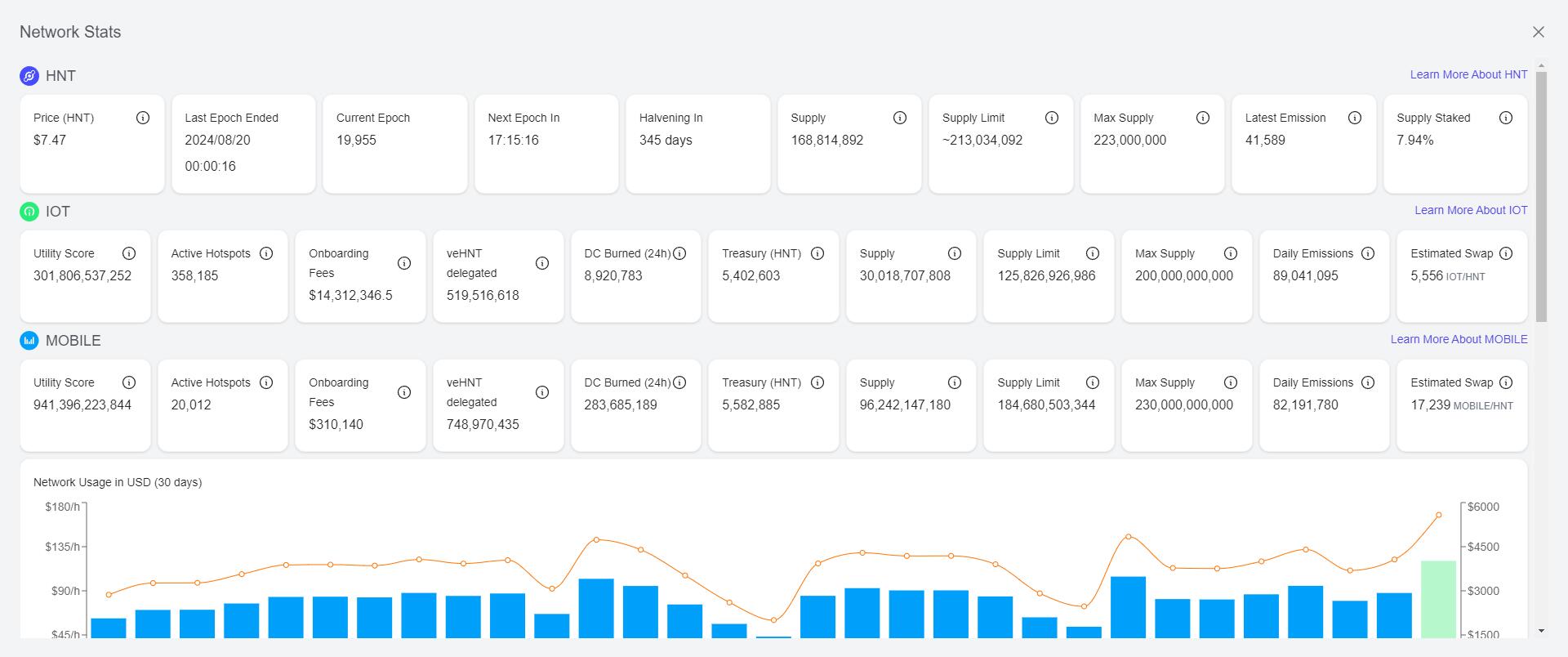
The Helium blockchain is an original open-source public chain designed to incentivize the development of decentralized physical wireless networks.
Helium has developed a new encryption consensus mechanism for this network to provide incentives for network expansion and maintenance behavior. The Helium gateway does not waste resources on mining functions, but provides practical services for extending the network to specific geographic areas, which are verified through Helium's "Proof of Coverage" mechanism. The final result is that the gateway will receive tokens to reward their efforts in contributing verification computing power to the underlying network.
Concept of POC
In order to accelerate the construction of a global decentralized wireless network, Helium has established a fair and effective incentive mechanism to promote network expansion, which is called Proof of Coverage. This mechanism consists of three roles, all of which are currently taken on by hotspots in the network and can receive corresponding HNT rewards.
| Role | Description |
Challenger | Hotspots in the Helium network can initiate a Challenged Beaconer every 360 blocks (approximately equivalent to 360 minutes) to challenge random hotspots in the network, and challengers can receive corresponding HNT rewards. |
| Challengee | After receiving the challenge information, the challenged hotspot will initiate an undifferentiated radio broadcast (RF Beacon) based on the challenge information. The surrounding hotspots that receive the broadcast will act as witnesses and can transmit the information back to the Helium network for verification. Each challenge requires a valid witness in order for the challenged to receive the corresponding reward. |
| Witness | The hotspot that receives the Beacon becomes a witness and will transmit the challenge information back to the Helium network. Each Epoch consensus group will determine the validity of the witness based on a series of logical factors such as the location of the witness and challenger, cryptographic evidence, and the reasonableness of signal strength and attenuation. After effective witnessing, the witness will receive corresponding rewards. |
The data transmission mechanism of Helium network is as follows:
IoT devices will securely connect to multiple local gateways within their transmission range using the WHIP protocol. After joining the network, the device will send encrypted data to all gateways.
Each gateway adds data to blocks, which will then be added to Helium's global blockchain. The data object will contain routing information to forward sensor data.
The gateway sends the specified data to the designated route. After obtaining data transmission services, the router will pay a fee to the gateway.
Route decryption data, process ends.
Helium proposed the "burn mint" dual token model, which achieves traffic credits (DC) through data transmission
HNT Token / IOT Token
The Helium Network Token (HNT) is the native cryptocurrency and protocol token of the Helium Network.
The Network targeted the distribution of 5,000,000 HNT per month at launch. Following the community approval of HIP-20, the Network uses a two-year halving schedule, resulting in a maximum HNT supply of 223,000,000 HNT.
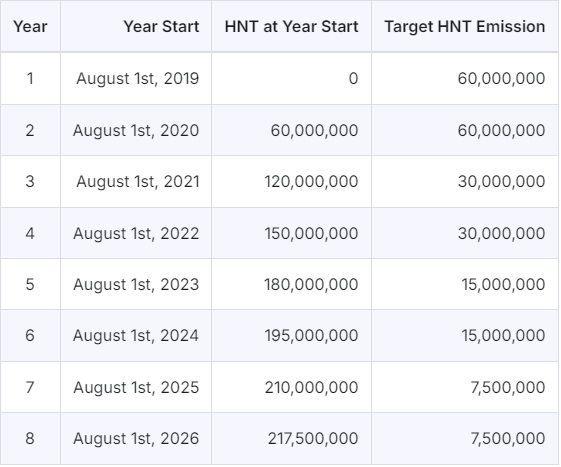
HNT USAGE
HNT serves the needs of the two primary parties in the Helium Ecosystem
1.Hotspot Hosts and Operators. Hosts are rewarded in network tokens like IOT or MOBILE while deploying and maintaining network coverage. These network tokens are redeemable for HNT.
2.Enterprises and Developers use the Helium Network to connect devices and build IoT applications. Data Credits, which are a $USD-pegged utility token derived from HNT, are used to pay transaction fees for wireless data transmissions on the Network.
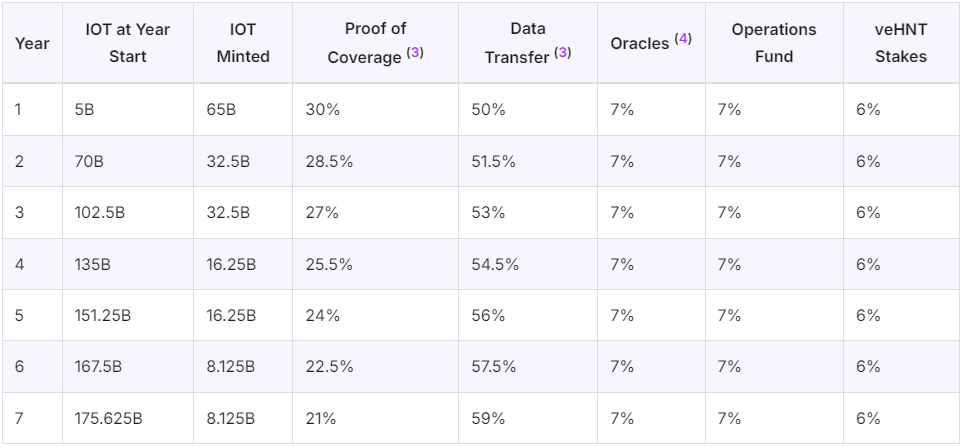
IOT TOKEN
IOT is the protocol token of the Helium IoT Network.
IOT follows a similar minting schedule to HNT, however at a max supply of 200,000,000,000 (200B).
Year 1 for IOT started on August 1st, 2022.
The issuance is scheduled to have halvings every 2 years, aligning with HNT issuance halvings.
The emissions schedule was created in HIP-52 and confirmed in HIP-77 and is as picture.
Network Connections
Helium network users need to pay traffic points DC to obtain data traffic, which is obtained by destroying HNT. Consuming traffic points means destroying the corresponding amount of HNT, and HNT cannot be regenerated after destruction.
The value of flow points is fixed at $0.00001 and non transferable, i.e. 1DC=$0.00001. The amount of HNT burned corresponding to one flow point depends on the market price of HNT.
For example, for a LongFi device that transmits every five minutes, using the Helium network for one year will cost approximately $1.04.
Token allocation mechanism for each mining cycle
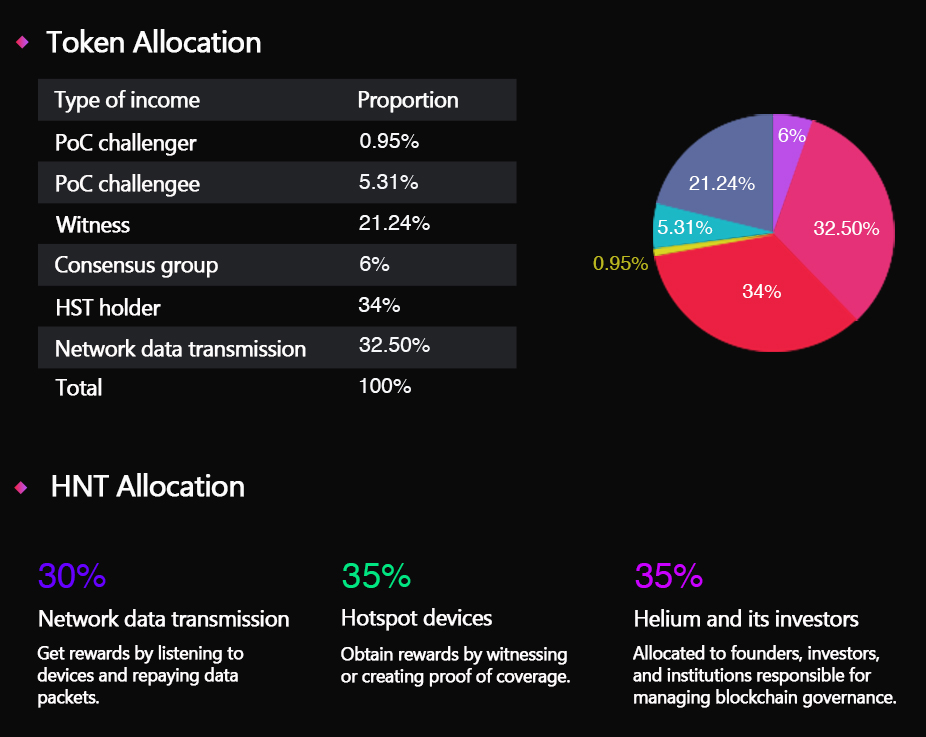
How are Tokens Earned?
Hotspots earn Helium tokens for building and securing network infrastructure and transferring device data.
The amount of tokens distributed to Hotspots depends on the type of “work” they perform based on the value to the network. This validation of network contribution is accomplished by a new work algorithm called Proof-of-Coverage (PoC).
PoC was designed to bootstrap Helium Network coverage. Over time rewards will shift to be more heavily allocated to data transfer with less going to PoC as the Network matures.
Wanna Enrn More Tokens?
Callboost lora amplifier help!
A singal booster for LoRaWAN network,helping challanger to earn more tokens.
Lora Amplifier can improve the receiving sensitivity of Helium Hotspot in complex wireless environments, requiring a series of strategies to optimize signal reception quality, ensure that Hotspot can effectively participate in the network, and improve data transmission efficiency.
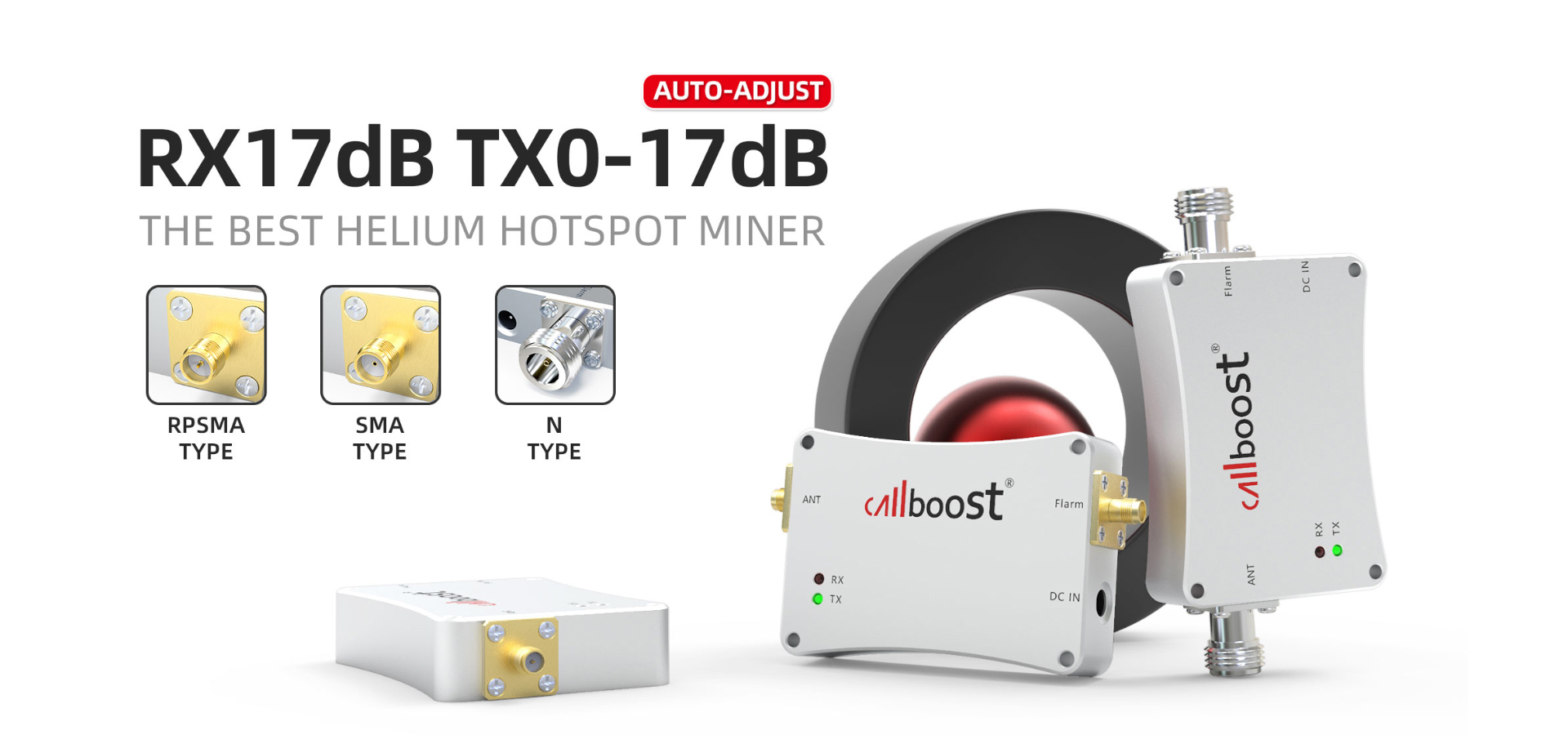
As the wireless communication terrain expands, the atmospheric environment is experiencing a heightened complexity in radio wave dynamics. In the context of the Helium IoT ecosystem, the growing congestion of adjacent-channel radio waves poses a significant challenge, materializing as substantial interference for Hotspots. This interference leads to a notable degradation of reception sensitivity and a considerable shrinkage in reception range. In light of this predicament, a considerable contingent of Helium Network participants have directed their focus towards the implementation of LoRa Signal Boosters. These devices are regarded as a strategic remedy to fortify reception coverage, effectively tackling the pressing requirement for improved signal clarity and extended reach amidst the dynamic wireless landscape.
To elaborate, LoRa Signal Boosters function by amplifying the incoming radio wave signals, thereby mitigating the effects of interference and enhancing the signal-to-noise ratio. This enhancement allows Helium Hotspots to maintain robust connectivity despite the dense radio wave environment. Additionally, these boosters can extend the operational range of Hotspots, ensuring that even in areas with high interference, reliable communication is sustained.
Moreover, the deployment of LoRa Signal Boosters can optimize the overall network efficiency by reducing the need for Hotspots to transmit at maximum power. This not only conserves energy but also decreases the likelihood of contributing to further interference, fostering a more sustainable and efficient wireless communication infrastructure.
In essence, the strategic use of LoRa Signal Amplifier represents a proactive approach to overcoming the challenges posed by complex radio wave dynamics in the Helium Network. By enhancing signal clarity and reception range, these devices play a pivotal role in maintaining the integrity and reliability of IoT communications within an increasingly crowded wireless spectrum.
How Does It Work?How to Enhance?
Subscribe to Callboost to know more!

